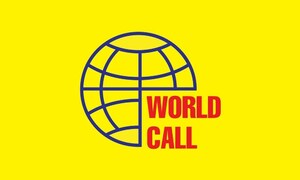At a time when Pakistan’s economy teeters on the edge, the export tax imposed by Khyber Pakhtunkhwa threatens to shut the door on one of the few avenues of growth: regional trade. Can Pakistan afford to handicap its exporters further? The imposition of a two percent Infrastructure Development Cess (IDC) on exports by the Khyber Pakhtunkhwa Revenue Authority (KPRA) has emerged as a significant challenge to Pakistan’s already fragile export sector. Introduced through a public notice on August 22, 2024, under the Khyber Pakhtunkhwa Infrastructure Development Cess Act, 2022, this levy applies to all exports from the province by air, road, or rail. While intended to generate revenue for infrastructure development, this decision threatens to undermine Pakistan’s export competitiveness in critical markets like Afghanistan and Central Asia.
The cess also has far-reaching implications for Pakistan’s packaged food sector and other key export industries. Packaged food exporters, who rely heavily on maintaining cost competitiveness to penetrate regional markets, face a direct threat to their profitability and market share. Other high-potential sectors, such as textiles, pharmaceuticals, and construction materials, are similarly affected. These industries have been identified as drivers of value-added exports, a focus area for the federal government. However, the additional cost burden imposed by the cess discourages investment in these sectors and stifles innovation, making it increasingly difficult for Pakistan to transition towards high-value export goods.
The cess stands in stark contrast to the federal government’s declared focus on promoting value-added products and expanding exports. Policies designed to diversify the export basket and transition from low-margin commodities to higher-margin, sophisticated goods require an enabling environment with minimal barriers. The IDC undermines these efforts by penalizing businesses that align with these strategic goals, effectively discouraging their growth and reducing the appeal of Pakistani products in the global market.
Meanwhile, the legal status of the IDC is under review by the Peshawar High Court, where stakeholders have challenged its legitimacy and economic rationale. Exporters and trade associations argue that the levy violates federal export policies and provincial commitments to facilitate commerce. The court’s decision will be pivotal in determining whether this controversial cess will persist or be overturned, potentially setting a precedent for future provincial export levies.
Global examples further illustrate the risks of such levies. India’s 2022 export duty on rice led to a loss of market share to Thailand and Vietnam as buyers perceived Indian suppliers as unreliable due to frequent policy shifts. Similarly, Indonesia’s temporary ban on palm oil exports in 2022 disrupted global supply chains, allowing competitors like Malaysia to strengthen their position. Indonesia was forced to reverse the decision after realizing its economic impact. Argentina’s long-standing agricultural export taxes have shown how such levies can reduce competitiveness, discourage investment, and encourage smuggling, ultimately harming the economy. These cases highlight how export taxes and levies can diminish market share, reduce trust among international buyers, and lead to sectoral stagnation. Pakistan’s imposition of the cess risks replicating these outcomes, particularly in critical markets like Afghanistan and Central Asia, where neighboring countries are actively competing for dominance.
The federal government’s policies claim to encourage exports and enhance Pakistan’s status as an exporting nation. However, the cess runs counter to these goals, acting as a disincentive for businesses trying to penetrate regional markets. Instead of supporting exporters, this measure imposes an additional financial burden, reducing their ability to compete effectively on price and quality. For example, the dairy sector has highlighted that this cess could hinder its efforts to grow exports to Central Asia and Afghanistan, two priority regions identified by the government. Moreover, the cess could discourage businesses from utilizing KP’s infrastructure for trade, reducing the potential benefits of increased transit traffic for the province itself.
Exports from Pakistan to Central Asian countries are already hindered by significant challenges, including inadequate connectivity, reliance on unstable transit routes through Afghanistan, non-tariff barriers, and intense competition from regional players like China and Turkey. These issues are compounded by high production costs, limited market knowledge, and insufficient banking links, all of which reduce the competitiveness and efficiency of Pakistani exports in these landlocked markets. The imposition of an additional two percent Infrastructure Development Cess (IDC) by the Khyber Pakhtunkhwa government exacerbates these existing hurdles, further increasing costs and eroding the appeal of Pakistani goods in Central Asia. This added financial burden risks pushing Pakistan further behind its competitors, undermining efforts to establish a stronger foothold in the region.
The federal and provincial governments must adopt a unified approach to exports. The federal government should engage with the KP administration through the Council of Common Interests to eliminate this cess and exempt exports from all provincial levies. Such measures would not only align provincial actions with national export priorities but also foster a more conducive environment for trade growth.
The two percent Infrastructure Development Cess imposed by the KP government is a short-sighted measure that risks significant long-term harm to Pakistan’s export ambitions. It is imperative for policymakers to recognize the strategic importance of exports and prioritize their growth over short-term revenue gains. Its implications include loss of market share to global competitors, reduced trust and reliability in the international trade market, and economic stagnation in the affected sectors due to reduced investment and competitiveness.

























Comments